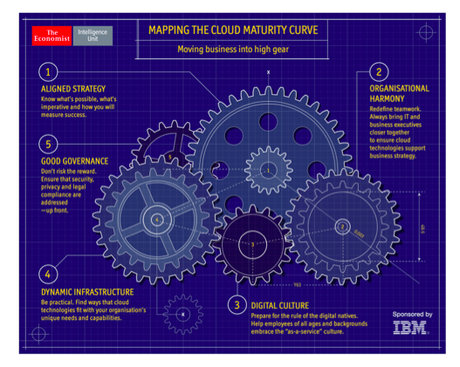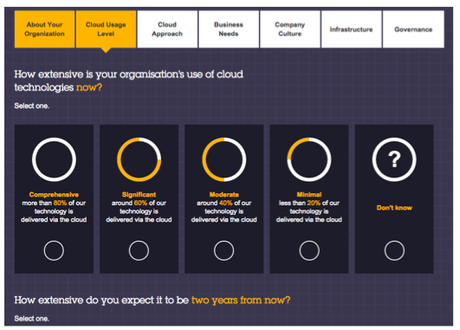 Cloud technology is no longer the future for business—it’s the here and now, and, as you no doubt know, it’s already weaving its way deep into business culture, playing a vital role for many organizations, both large and small. Whether by way of vendor managed Software-as-a-Service (SaaS) or, as we are increasingly seeing with the addition of hardware, processing, data management, and information tracking services, organizations are moving away from traditional legacy IT systems to the flexibility of cloud services.
Cloud technology is no longer the future for business—it’s the here and now, and, as you no doubt know, it’s already weaving its way deep into business culture, playing a vital role for many organizations, both large and small. Whether by way of vendor managed Software-as-a-Service (SaaS) or, as we are increasingly seeing with the addition of hardware, processing, data management, and information tracking services, organizations are moving away from traditional legacy IT systems to the flexibility of cloud services.
But how do business leaders who have been accustomed to traditional processes and evaluation methods measure their progress in this brave new world? The Economist Intelligence Unit (EIU) set out to answer that question by undertaking a 12-month research program exploring how companies can develop successful cloud strategies. The IBM-sponsored program is designed to help organizations using cloud technologies understand the journey they are on, the metrics to use to measure success, and, most importantly, how to recognize when their goals have been achieved.
The research has identified what is described as the “five fundamentals of cloud maturity,” as illustrated by this infographic from the EIU.

Fundamental 1: Aligned Strategy
“Know what’s possible, what’s imperative, and how you will measure success.”
You can’t get any strategy off the ground, never mind one as “new” as cloud maturity measurement, unless you have all your senior level ducks in a row. This is when it’s critical that executive leadership and senior IT leadership (and/or your managed service provider vendor partner) come together to identify both the business objectives of the company as well as how adopting cloud strategies can help achieve their respective strategic goals. The strategy is your road map, and once your destination is known, cloud strategies can be developed, implemented, and optimized to ensure those goals are reached.
The EIU highlights some pragmatic advice for CIOs struggling to convince fellow executives to buy-in to cloud initiatives. Hyperion Insurance Services CIO, David Jack, had this to say, “Just do it. Then people can see what is possible. The way you get the business close to IT is to grab two or three issues that are already close to the business, and then show the CFO that you have got him or her off the hook in lightning-quick time. Find a pain point and then fix it.” I love this strategy and use it all the time. Don’t try to get buy-in from everyone, find a few key areas and people (or teams) that you can make heroes and solve problems for (and maybe even generate revenue and/or cost savings for), and that’ll get you the attention and the buy-in (and budget) you seek.
Fundamental 2: Organizational Harmony
“Redefine teamwork. Always bring IT and business executives together to ensure cloud technologies support business strategies.”
As mentioned above, the way to success is to break down the silos between the C-Suite and your IT department and to function as a team. The IT team can’t (and shouldn’t) be viewed as a service department, they should play a key role in strategies that are designed to build and grow the business. This is an important move for senior leaders. Establishing a corporate culture where effective dialog between IT and other business units is the norm will go a long way toward avoiding “Shadow IT” initiatives, and other potentially dangerous security issues from rearing their heads. If you’re a managed service provider working with clients, the same is true of your relationship with the key senior executives at your client companies. When you ask for a seat at the table when it comes to the development of key business goals and strategies, that’s where you can help your clients the most and deliver the greatest impact.
Fundamental 3: Digital Culture
“Prepare for the rule of the digital natives. Help employees of all ages and backgrounds embrace the ‘as-a-service’ culture.”
Younger workers, especially the Millennial generation, have grown up surrounded by rapidly evolving digital technology. They are more likely to be accepting of—if not the driving force behind—technological change and a move to cloud services. But sometimes there can be a danger in moving too quickly. Likewise, more seasoned workers may be less quick to adapt and change, and may need more training and support. Strong teams need both! Senior leaders, their IT teams, and their managed service provider partners do everyone a favor by ensuring that the entire organization has a clear understanding of why new technologies are being used, and communicate a common purpose in implementing them.
Fundamental 4: Dynamic Infrastructure
“Be practical. Find ways that cloud technologies fit with your organization’s unique needs and capabilities.”
Every organization is unique, and its needs are likely unique as well. Once you’ve managed to get your employees on board and the cloud and business strategies aligned, make sure you review your underlying technology infrastructure, and redesign it as needed. Your goal should be practical and workable technology options that will respond to the company’s needs, capabilities,and goals, and which are adaptable, and scalable, as needed.
Fundamental 5: Good Governance
“Don’t risk the reward. Ensure that security, privacy, and legal compliance are addressed – up front.”
Recent high profile cyber attacks ensure that scrutiny from regulatory authorities and the public will grow ever more intense. Organizations must ensure that their approach to the security and integrity of cloud infrastructure and data management becomes a part of their corporate culture from the outset. Make sure you and your team are focused on developing security policies and make sure every single person on your staff understands them, and adheres to them.
To that end, here’s some info on a pretty cool new tool just released from IBM that easily allows you to calculate your organization’s cloud maturity curve, and lets you know how you stack up against others in your industry. Called The Benchmark Tool, I’ve played around with it, and it’s extremely simple to maneuver through, taking about five minutes to complete. They ask pretty in depth questions about your company, as well as your overall cloud usage, etc., so be prepared to open up if you want to try it!

Also note that you have to register to use the tool, but it’s not an annoying process and I think it’s definitely worth the time to check it out, especially if you’re getting more serious about the cloud as it relates to your organization and/or, if you’re an MSP, your client’s organization, and want to set a benchmark for where you sit currently as far as cloud maturity is concerned.
You can also find out a lot more about the EIU research by downloading Mapping the Cloud Maturity Curve (registration also required).
Additional Resources on this Topic:
Most Companies Naive About Cloud Strategy Maturity: SAP Study
Channelling Digital, People and Organisational Power
Cloud and the Revolutionization of Business
This post was brought to you by IBM for MSPs and opinions are my own. To read more on this topic, visit IBM’s PivotPoint. Dedicated to providing valuable insight from industry thought leaders, PivotPoint offers expertise to help you develop, differentiate and scale your business.
Photo Credit: mitbbsnews1 via Compfight cc

